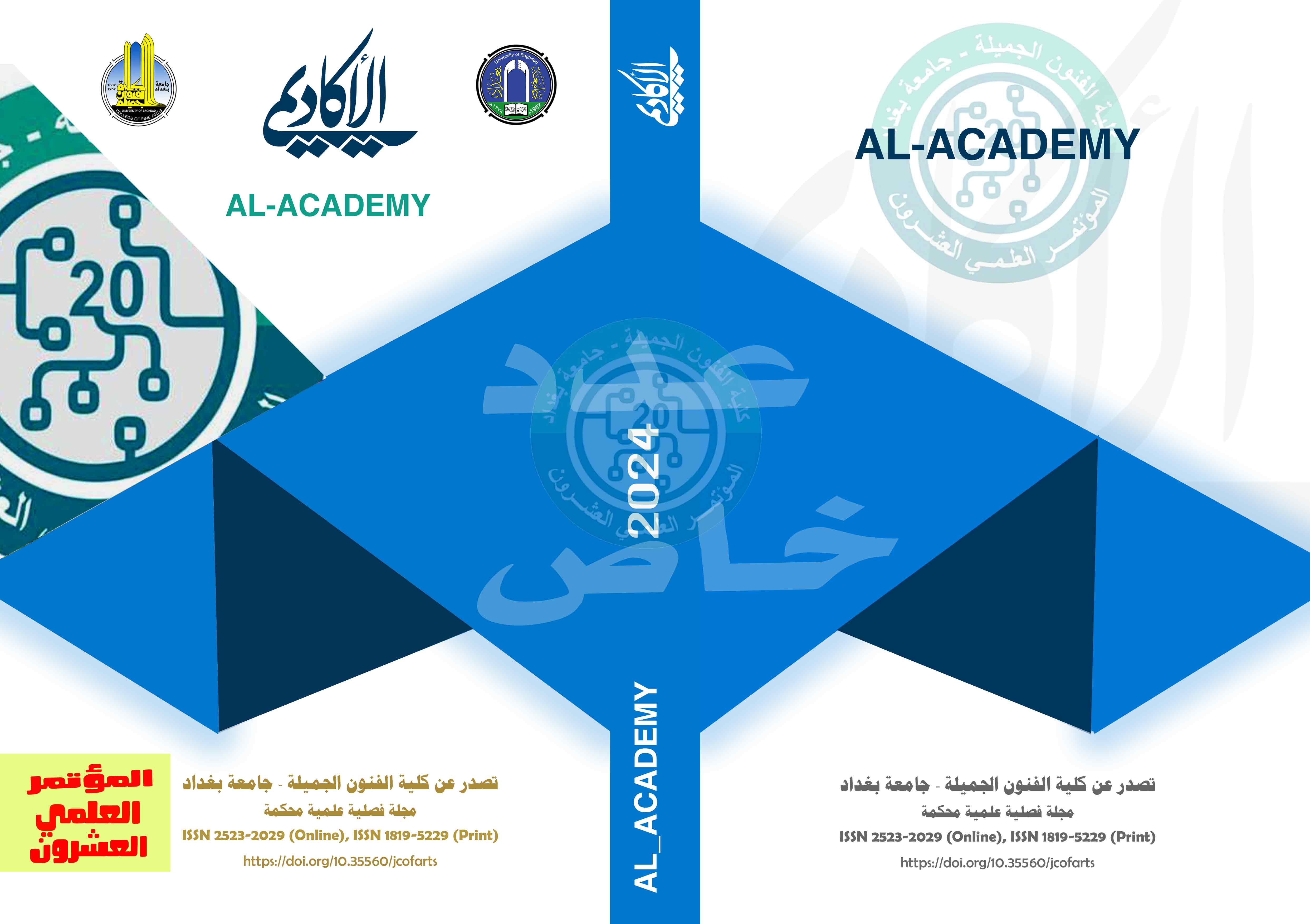The concept of psychosocial in contemporary formation
DOI:
https://doi.org/10.35560/jcofarts1411Keywords:
psychosocial concept contemporary formationAbstract
The current research dealt with (the psychosocial concept in contemporary formation). The research included four chapters, the first chapter of which was concerned with the methodological framework of the research, represented by the research problem, which was determined by answering the following question:
The following two questions:
1-What is the concept of psychosocial and what are its manifestations in contemporary formation?
The first chapter also included the goal of the research, which is to identify the concept of psychosocial in contemporary composition.
The limits of the research were determined as follows:
1- Spatial borders: Europe and America.
2- Temporal borders: 1946-1996.
The second chapter (the theoretical framework for the research): deals with the following topics: The first section deals with the concept of psychosocial in art. The second topic: Psychosocial formation of postmodernism.
The third chapter was concerned with analyzing the research sample, which consisted of (3) samples. The fourth chapter is determined by the results of the research, including:
1- Social chaos and chaos are considered one of the manifestations of social psychology and one of its manifestations that can be clearly traced through the products of contemporary formation, as social disorder and chaos replace monotony, order, and arrangement, and are subject to the will instead of being controlled. Model (1 and 3).
2- The psychosocial concept was represented by an extremist tendency, which expressed itself by venting the growing anxiety in the depths of the artist regarding his psychological crises, which are directly related to the objective (social) given, pressing towards crushing himself, which led to his transformation into a mere number subject to the circulation of commodification and the philosophy of the market. Model (2).
References
Al Bayati, S. J. (2022). The image of the soldier in contemporary Iraqi painting. Al-Academy(106), 187-204.
Al-Bayati, J. H. (2023). The new aesthetic in contemporary world painting. Al-Academy, 287–302. doi:https://doi.org/10.35560/jcofarts1226
Al-Naimi, f. J. (2012). Social Psychology. (D. Uma, Trans.) Iraq.
Al-Naimi, F. J. (2016). Social Psychology (a study of the secrets of man and the forces of society). (D. Uma, Trans.) Beirut.
Al-Sayyid, F. A.-B., & Abdel-Rahman, S. (1999). Social Psychology (A Contemporary View). Cairo: Arab Thought.
Fromm, E. (n.d.). The concept of man according to Max. (M. S. Rassas, Trans.) Al-Hasad, Syria.
Hassan, S. J. (2015). Compound Shapes in the work of the artist Max Ernst and Ali Najjar. Al-Academy(72), 19-38.
Hassan, S. J. (2018). The stylistic change in Kandinsky and Mondrian paintings. Al-Academy(88), 5-24.
Hassan, s. J. (2023). Intellectual manifestations in conceptual art. Journal of Nabo, 34.44.
Imad, A.-G. (2006). Sociology of Culture (Concepts and Problems... from Modernity to Globalization). Al-Qahera: Center for Arab Studies, Perua.
Muhammad, B. (2020). Art and Garbage Change Aesthetic Taste. Beirut: Al-Rafidain.
Muhammad, B., & Jabbar, S. (2015). Contemporary Art, Its Methods and Trends. baghdad: Al-Fath.
Umitrier, J., & Kuhn, D. (2019). Introduction to Psychology (Gateways to Mind and Behavior). (M. Hawashin, M. Al-Zoubi, & others, Trans.) Jordan: Dar Al-Fikr.














